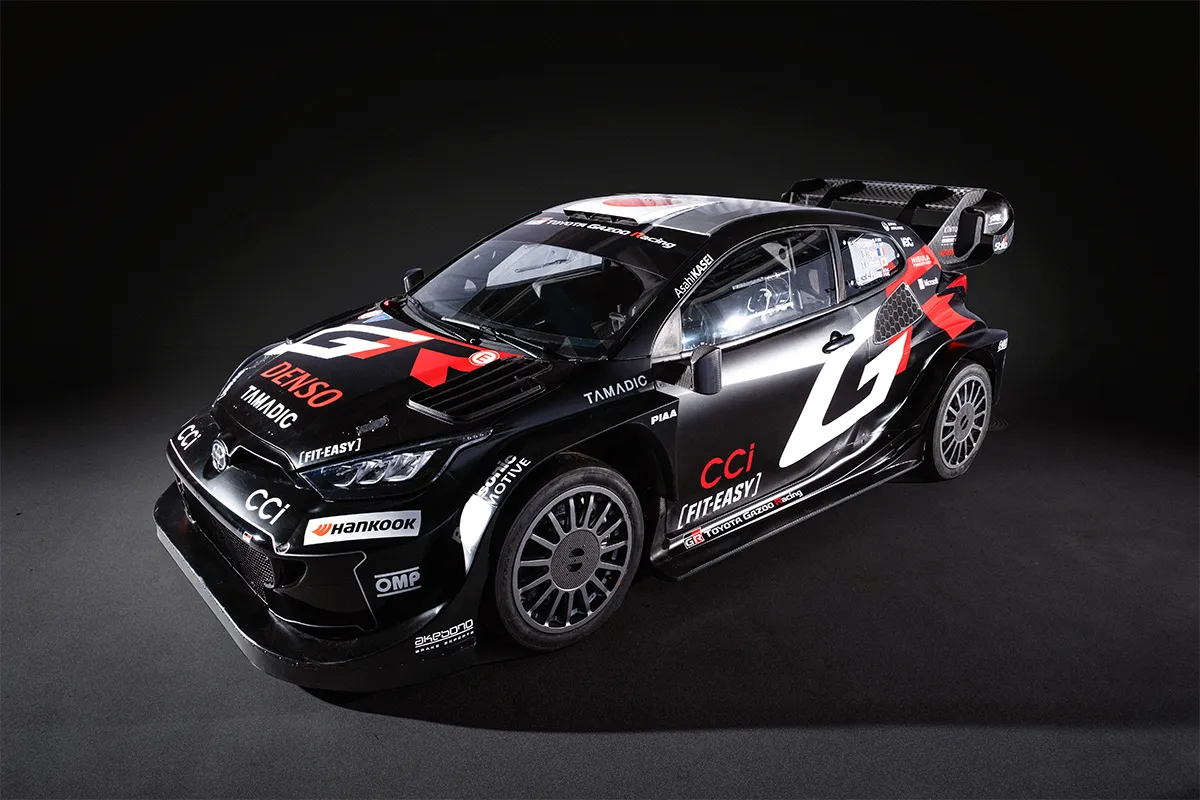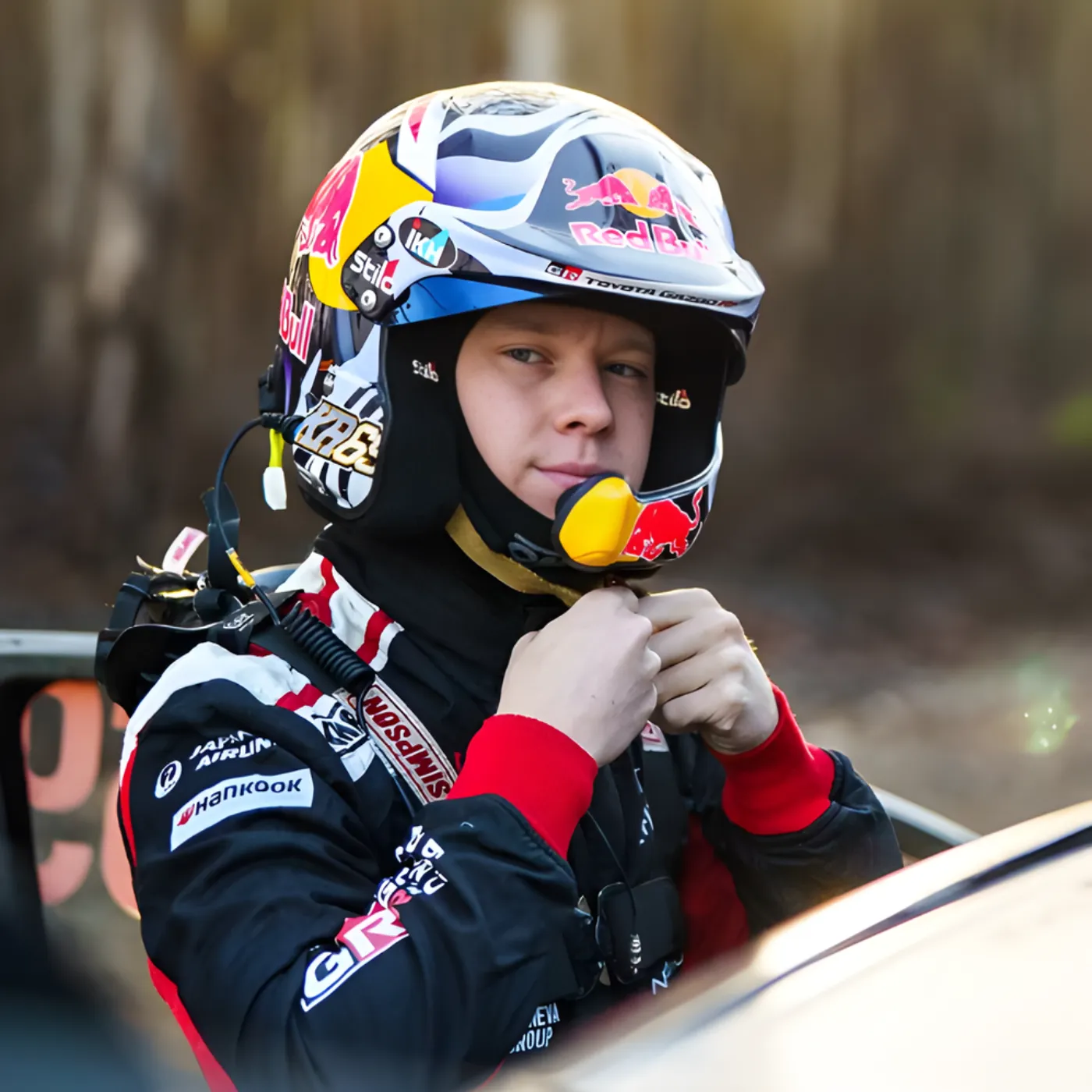

Elfyn Evans profits immensely as the WRC 2025 returns to 1.6L turbo engines and eliminates hybrids.
The 2025 World Rally Championship season is set to bring one of the most significant regulation changes in recent history. After years of hybrid technology being at the forefront, WRC has decided to revert to pure 1.6L turbocharged engines, eliminating the hybrid power units that have dominated the sport in recent seasons. While this change has sparked intense debate among teams, manufacturers, and fans, one driver in particular stands to benefit immensely—Elfyn Evans.
As one of the most consistent and talented drivers in the championship, Evans has long been a contender for the title. However, the shift away from hybrids presents him with a unique opportunity to take his performance to the next level. With his deep understanding of traditional internal combustion engines and his ability to extract the most from a car in challenging conditions, Evans could be in the perfect position to capitalize on this transition.
But why exactly does this rule change favor him so much? And how will it impact the broader landscape of the WRC? Let’s take a deep dive into what this means for Evans and the future of rally racing.
The End of the Hybrid Era: Why WRC is Reverting to 1.6L Turbo Engines
The decision to eliminate hybrid technology from the WRC has been met with mixed reactions. While hybrids were introduced to align with modern automotive trends and sustainability efforts, their integration into rallying was not without its challenges.
One of the biggest criticisms of hybrid power in WRC was its complexity. The additional weight of the hybrid system made the cars heavier, altering their handling characteristics. Drivers often struggled to adapt to the unpredictable nature of energy deployment, especially in stages where battery performance fluctuated due to temperature, terrain, and software limitations.
Additionally, hybrid systems proved to be a costly investment for teams. Development and maintenance of hybrid components required significant financial resources, and many manufacturers were hesitant about the long-term viability of this technology in a sport that thrives on mechanical simplicity and durability.
By returning to 1.6L turbocharged engines, WRC is effectively bringing the sport back to its roots—high-performance combustion engines that deliver raw power, responsiveness, and a more engaging driving experience. This move is expected to level the playing field and put more emphasis on driver skill rather than hybrid-assisted performance advantages.
Why Elfyn Evans Gains the Most from This Change
Among all the top WRC drivers, Elfyn Evans may be the biggest beneficiary of this regulation shift. There are several key reasons why the move back to pure combustion engines plays directly into his strengths.

1. His Driving Style Suits Traditional Turbo Engines
Evans is known for his smooth yet aggressive driving approach, which relies heavily on throttle control and precise braking. Hybrid systems forced drivers to adapt their style to accommodate the additional weight and power delivery quirks. With those complexities gone, Evans can return to a driving technique that made him a formidable competitor in the pre-hybrid era.
Traditional turbocharged engines provide a more linear power delivery, allowing drivers to fine-tune their acceleration out of corners. Evans excels in managing grip levels and maintaining high exit speeds, which will become even more crucial without the unpredictable power surges from hybrid systems.
2. Experience with Non-Hybrid WRC Cars
Unlike some of the younger drivers who entered the championship during the hybrid era, Evans has extensive experience driving pure turbocharged rally cars. Before hybrids were introduced in 2022, he had already proven himself as a top contender in the 1.6L turbo era, securing multiple wins and podium finishes.
This experience gives him a valuable advantage, as he won’t need to undergo the same adaptation process as younger drivers who have only raced in hybrid-powered cars. He can immediately return to a familiar style without the learning curve that others may face.
3. Toyota’s Strength in Engine Development
Toyota, Evans’ current team, has long been known for producing some of the most powerful and reliable engines in rally racing. Their expertise in turbocharged technology gives them a significant edge in this transition.
Without the added complexity of hybrid components, Toyota can focus solely on refining the performance and reliability of its internal combustion engine. This could result in a more balanced car, allowing Evans to extract maximum performance in every rally.
Given that Toyota has already dominated much of the hybrid era, there’s little doubt that they will continue to be a top contender in the new regulations. With Evans at the wheel of what could be the best non-hybrid rally car on the grid, his chances of securing victories—and even a championship—have increased dramatically.

Challenges and Rivalries in the Post-Hybrid Era
While the return of 1.6L turbo engines presents a golden opportunity for Evans, he won’t have an easy path to the championship. The competition remains fierce, and other drivers and teams will also look to exploit the new regulations to their advantage.
1. Kalle Rovanperä: The Defending Champion Adjusts
Kalle Rovanperä has been the dominant force in WRC in recent seasons, thanks to his extraordinary skill and adaptability. While the hybrid era played to his strengths, there’s no reason to believe he won’t adjust to the new regulations just as effectively.
Rovanperä’s natural talent and ability to learn quickly mean he will likely remain Evans’ biggest threat. The key question is whether Evans can use his experience with turbo engines to gain an early advantage before Rovanperä fully adjusts.
2. Ott Tänak’s Return to Form
Ott Tänak, another former WRC champion, has had a mixed run in recent seasons, partially due to hybrid system inconsistencies. With the technology being removed, Tänak might find himself back in title contention, making the championship battle even more intense.
Tänak’s aggressive style could benefit from the raw power of turbocharged engines, meaning Evans will need to stay on top of his game to fend off the Estonian driver.
3. Hyundai’s Response to the Rule Changes
Hyundai, Toyota’s biggest rival, has been vocal about its concerns regarding the removal of hybrids. While they have a strong engineering team, they now face the challenge of developing a competitive non-hybrid car in a short time frame.
If Hyundai struggles to adapt, it could give Toyota and Evans a crucial advantage early in the season. However, if they succeed, Evans will have yet another formidable rival to contend with.
What This Means for WRC’s Future
Beyond Evans’ personal advantage, the decision to return to non-hybrid engines marks a pivotal moment for WRC as a whole. The shift signals a return to traditional rally racing values—lightweight, powerful cars that rely on driver skill rather than hybrid-assisted boosts.
For fans, this could mean more exciting and unpredictable racing, with less emphasis on technology and more on raw driving talent. The removal of hybrids may also make WRC more appealing to privateer teams, as costs will likely decrease, allowing for greater participation.
From a manufacturer’s standpoint, the decision has both pros and cons. While some automakers have been pushing for more hybrid and electric involvement, others see this as an opportunity to refine their internal combustion technology.
Regardless of the long-term implications, one thing is clear—2025 is shaping up to be one of the most intriguing WRC seasons in recent memory. And for Elfyn Evans, it may just be the year he finally claims the title that has eluded him for so long.


















